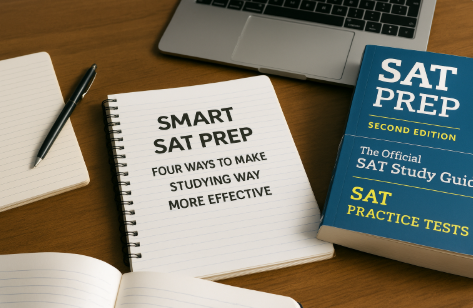Subscribe to our newsletter
Thank you! We got you!
Oops! Something went wrong. Try again!

When students struggle with the SAT Reading section, the first thing they usually ask is: “Should I read the questions first?” “Should I annotate the passage?” “Should I skim?” These are fair questions — but not the most important ones. How you read the passage matters less than how you process the answer choices. In fact, many high scorers use completely different reading methods. Some start with the passage, some jump to the questions. The real difference comes down to how they evaluate answers — especially when things get tricky.
The SAT isn’t a test of finding the right answer; it’s a test of eliminating the wrong ones. Every question has one correct answer and three incorrect ones. Your job is to spot the flaws in the wrong choices. This is where most students go wrong. They read the choices, find one that sounds “pretty good,” and pick it without making sure the other three are definitively wrong. But the SAT is designed to trick you with tempting-but-flawed options. The only way to be sure is to prove the other three are wrong.
Wrong answers aren’t random. They’re designed to look right. Here are the most common traps to watch for:
• Too Extreme: Words like “always,” “never,” “completely,” or “impossible” are red flags. The SAT prefers nuanced, moderate language. If an answer choice makes a strong, absolute claim, it’s probably wrong.
• Out of Scope: This is the most common trap. The answer choice brings in information or ideas that weren’t mentioned in the passage. It might be a logical extension of the text, but if the passage doesn’t explicitly support it, it’s wrong.
• One-Word-Off: The answer choice is almost perfect, but one word throws it off. It might misrepresent the author’s tone (e.g., using “angry” when the author was just “critical”) or change a key detail.
• True, But Not Right: The answer choice is a true statement, but it doesn’t actually answer the question being asked. It’s a distraction.
Next time you take a practice test, don’t just circle the right answer. For every question, write down why the other three choices are wrong. This forces you to engage with the text and the answer choices on a deeper level. It’s a more active, effective way to study. At Preppinbee, our platform gives you detailed explanations for every question, showing you not just why the right answer is right, but also why the wrong answers are wrong. This helps you train your brain to spot these traps on test day. Ready to start prepping smarter? Sign up for a free trial and see how our targeted approach can help you master the SAT Reading section.
Sign up for free now to access personalized study plans, practice tests and questions, vocabulary and tutorial bank, mistakes review, personalized tests and college admission tools and resources.